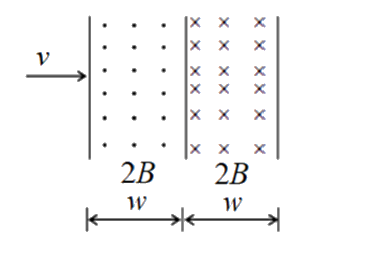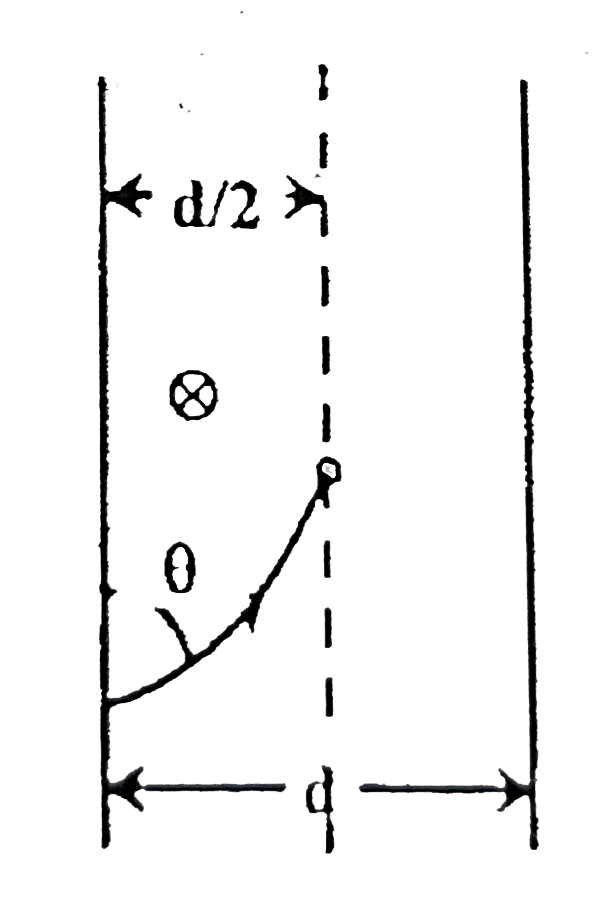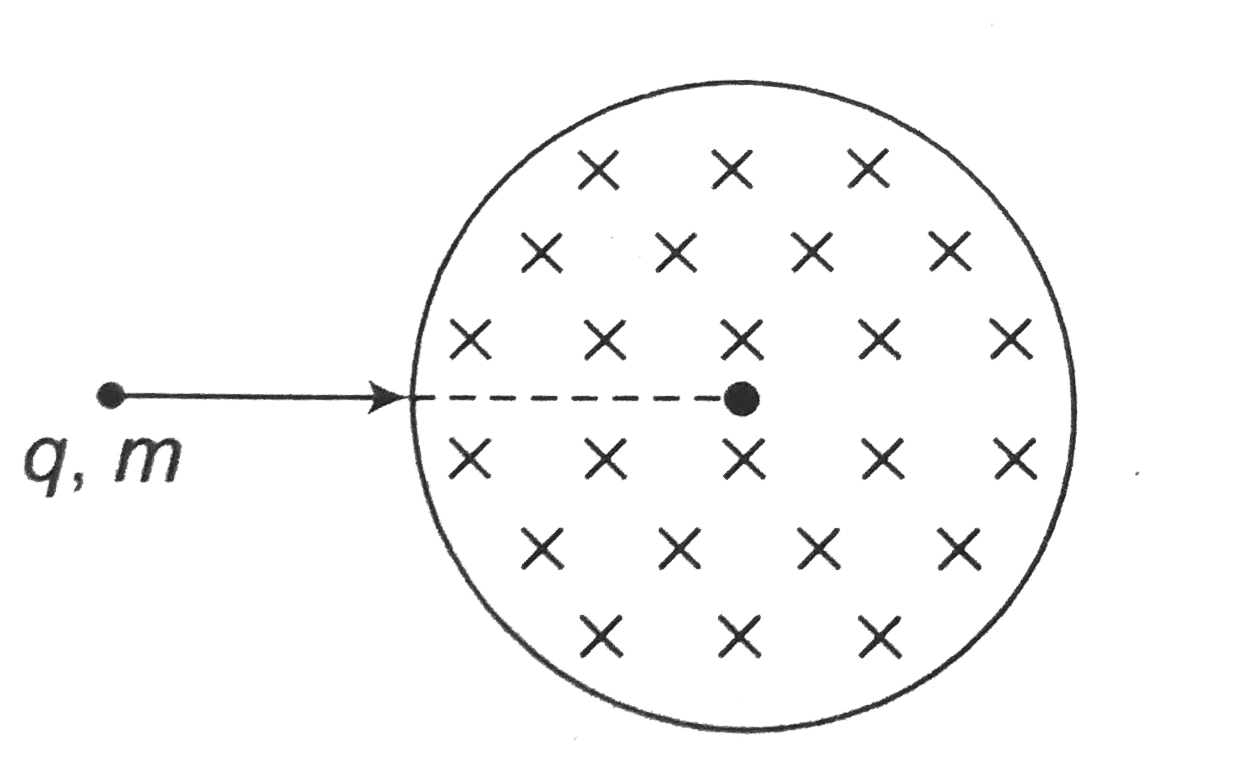AB and CD are two parallel planes perpendicular to the X axis. There is a uniform magnetic field (B) in the space between them directed in negative Z direction. Width of the region having field is d and rest of the space is hav- ing no field. A particle having mass m and charge + q enters the region with a velocity V making an angle q with the X direction as shown.
(a) Find the values of d for which the particle will come out of the magnetic field crossing CD.
(b) For d=(√2−12)mvqB and 0=π6 find the angular deviation in the path of the particle.
(c) Find the deviation in path of the particle if d=5mv4qB(1−sin0)

The correct Answer is:(a)d<mvqG(1−sin0)(b)15∘
(c)π−20
Step by step video, text & image solution for AB and CD are two parallel planes perpendicular to the X axis. There is a uniform magnetic field (B) in the space between them directed in negative Z direction. Width of the region having field is d and rest of the space is hav- ing no field. A particle having mass m and charge + q enters the region with a velocity V making an angle q with the X direction as shown. (a) Find the values of d for which the particle will come out of the magnetic field crossing CD. (b) For d=((sqrt2-1)/(2))(mv)/(qB) and 0=(pi)/(6) find the angular deviation in the path of the particle. (c) Find the deviation in path of the particle if d=(5mv)/(4qB)(1-sin 0) by Physics experts to help you in doubts & scoring excellent marks in Class 12 exams.
Updated on:21/07/2023Topper's Solved these Questions
- MOTION OF CHARGE IN MAGNETIC FIELDBook:ARIHANTChapter:MOTION OF CHARGE IN MAGNETIC FIELDExercise:Level-3
Explore 4 Videos
- MOTION OF CHARGE IN MAGNETIC FIELDBook:ARIHANTChapter:MOTION OF CHARGE IN MAGNETIC FIELDExercise:Level-3
Explore 4 Videos
- MAGNETIC EFFECT OF CURRENTBook:ARIHANTChapter:MAGNETIC EFFECT OF CURRENTExercise:Magnetic effect of Current
Explore 45 Videos
- NUCLEAR PHYSICSBook:ARIHANTChapter:NUCLEAR PHYSICSExercise:All Questions
Explore 54 Videos
Similar Questions
A particle having mass m and charge q is projected with a velocity v making an angle q with the direction of a uniform magnetic field B. Calculate the magnitude of change in velocity of the particle after time t=πm2qB.
View SolutionA particle of mass m and charge q is projected into a region having a perpendicular magnetic, field B. Find the angle of deviation of the particle as it comes out of the magnetic field if th,, width of the region is (b)
(a) 2mvBq(b)(mv)/(Bq)(c)(mv)/(2 Bq)
View Solution
Knowledge Check
A charged particle of mass m and charge q enters a magnetic field B with a velocity v at an angle θ with the direction of B. The radius fo the resulting path is
AmvsinθqBBmvqBsinθCmvqBDmvtanθqBA proton of mass m and charge q enters a magnetic field B with a velocity v at an angle θ with the direction of B.The radius of curvature of the resulting path is
AmvqBBmvsinθqBCmvqBsinθDmvcosθqBA region has a uniform magnetic field in it. A proton enters into the region with velocity making an angle of 45° with the direction of the magnetic field. In this region the proton will move on a path having the shape of a
Astraight line.BcircleCspiral.Dhelix.
The figure shows two regions of uniform magnetic field of strengths 2B and 2B. A charged particle of mass m and charge q enters the region of the magnetic field with a velocity υ=qBwm, where w is the width of each region of the magnetic field. The time taken by the particle to come out of the region of the magnetic field is

View SolutionA charged particle enters into a magnetic field with velocity vector making an angle of 30∘ with respect of the direction of magnetic field. The path of the particle is
View SolutionA particle of mass m and charge Q moving with a velocity v enters a region on uniform field of induction B Then its path in the region is s
View SolutionA charged particle of mass m & charge q enters a zone of uniform magnetic field B with a velocity v making an angle θ with the boundary of the zone, having width d, when the particle penetrates half-way into the zone, the change in energy of the particel is

View SolutionA particle having mass m, charge q enters a cylindrical region having uniform magnetic field B in the inward direction as shown. If the particle is deviated by 60∘ as it emerges out of the field then what is the time spent by it in the field?

View Solution